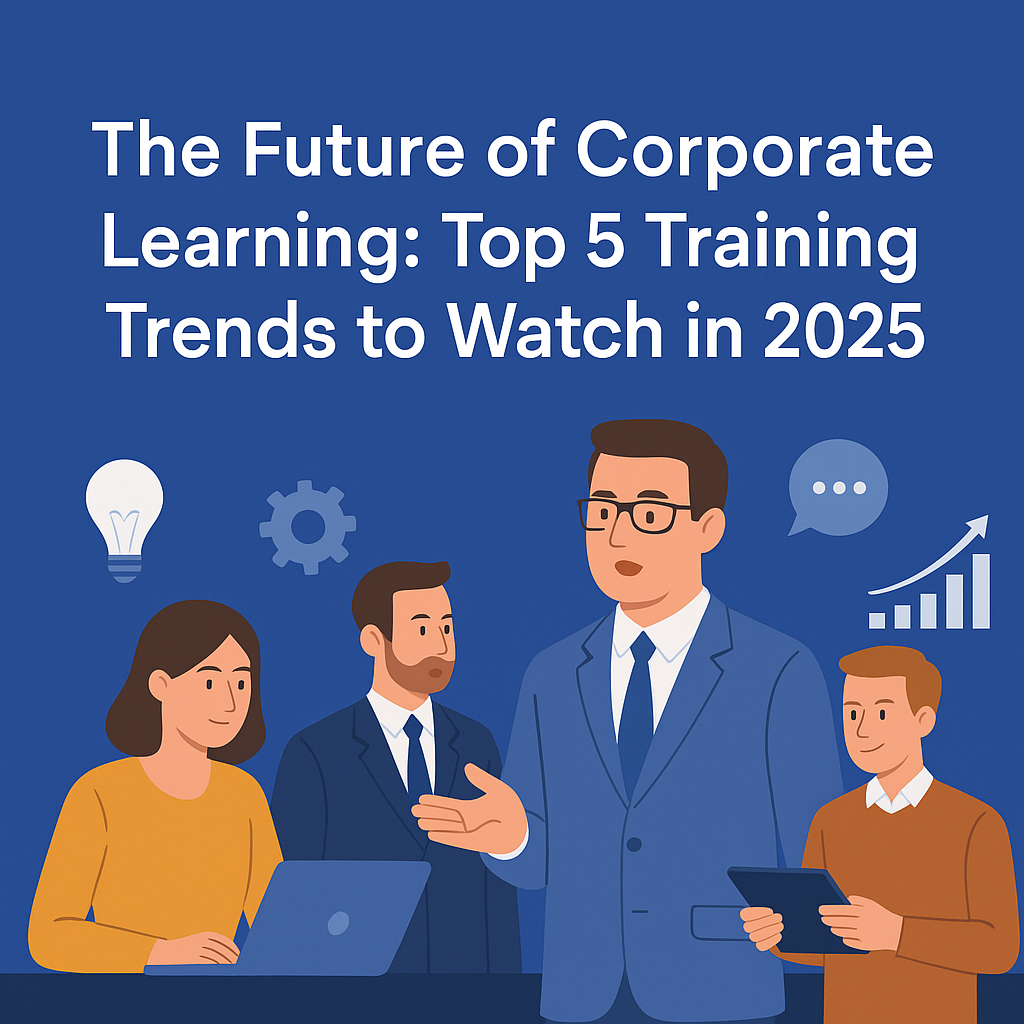As the global workforce continues to evolve, the landscape of corporate learning is transforming at breakneck speed. With digital disruption, emerging technologies, and shifting workforce expectations, Learning and Development (L&D) teams are under pressure to adapt—or risk falling behind.
Organizations no longer view training as a secondary function. Instead, it’s now a key strategic lever for business success. In 2025, training programs must be data-driven, flexible, inclusive, and aligned with business goals to stay competitive. Below, we explore the five most impactful corporate training trends that will shape the workplace of tomorrow.
What Is Corporate Training?
Corporate training refers to structured learning initiatives designed to improve employee skills, productivity, and organizational alignment. Typically led by L&D professionals, these programs aim to upskill and reskill talent, foster team cohesion, and support long-term business growth.
Popular Types of Corporate Training
Here are some widely adopted categories of workplace learning:
-
New Employee Onboarding – Lays the foundation for success by educating new hires about company culture, values, and operational processes.
-
Leadership & Management Development – Equips current and future leaders with essential skills in decision-making, emotional intelligence, and team management.
-
Technical Skills Training – Covers role-specific tools, platforms, or processes—such as data analysis, coding, or machinery handling.
-
Regulatory & Compliance Training – Ensures employees adhere to industry standards, data privacy laws, and workplace safety protocols.
-
Diversity, Equity & Inclusion (DEI) Programs – Promotes inclusive workplace behavior by tackling unconscious bias, cultural sensitivity, and equitable leadership.
Why It Matters More Than Ever
The corporate world is moving fast. Digital transformation, remote work, and automation have made continuous learning essential. Studies show that employees are more likely to stay with companies that invest in their growth—making corporate training a cornerstone of retention and engagement strategies.
Top 5 Corporate Training Trends Defining 2025
1. Skills Gaps Are Under the Microscope
Organizations worldwide are facing a critical shortage of future-ready skills. With AI and automation becoming mainstream, roles are evolving faster than ever. According to McKinsey, 65% of global businesses now use AI in at least one operational area.
This rapid change highlights a glaring need: upskilling and reskilling existing talent to keep pace with innovation.
Companies must embrace agile L&D strategies that identify and close skill gaps efficiently. Training offerings should focus on high-demand areas such as data literacy, digital collaboration, and emerging technologies. More importantly, L&D must involve employees in determining what skills they want and need to learn.
2. Training Must Prove Its Business Value
Gone are the days when course completion rates were enough. Executives want to see real outcomes. In 2025, L&D success will be measured by its impact on business performance: productivity, retention, customer satisfaction, and profitability.
To demonstrate ROI, training programs should be tied to strategic goals. For example:
-
Lower employee turnover
-
Higher sales performance
-
Faster onboarding timelines
-
Increased compliance across departments
By starting with a business challenge and reverse-engineering the training solution, L&D teams can position themselves as strategic partners—not just service providers. This shift from reactive to proactive learning design is essential.
3. Remote-Friendly Learning Is Now Non-Negotiable
Workplace flexibility is here to stay. Whether your company is fully remote, hybrid, or office-first, your training must be accessible from anywhere.
Modern training platforms should include:
-
On-demand content for asynchronous learning
-
Mobile access to fit around flexible work schedules
-
Interactive elements like quizzes, video, and peer collaboration
-
Progress tracking tools for managers and L&D teams
Tools like Zoom, Microsoft Teams, and learning management systems (LMS) are indispensable for delivering seamless online education experiences. The most effective training environments blend structured learning with flexible delivery formats that match how employees actually work.
4. Collaborative Learning Is the New Standard
Top-down learning models are outdated. Today’s employees—especially Millennials and Gen Z—expect personalized, participatory training environments.
This new model empowers everyone in the organization to contribute:
-
Subject-matter experts can co-create courses
-
Teams can share feedback in real-time
-
Learners can suggest or vote on training needs
This decentralized approach accelerates course creation, captures internal expertise, and fosters a sense of ownership over learning. Platforms that support peer-to-peer knowledge sharing are quickly becoming essential to modern L&D strategies.
5. Continuous Content Updates Are Crucial
The shelf life of learning content is shrinking—often less than five years. In fast-moving industries like tech, even a year can render materials obsolete.
To stay relevant, companies need flexible training platforms that allow for rapid content creation and updates. Involving internal teams in the creation process helps ensure that learning materials reflect real-time challenges, tools, and workflows.
Ongoing feedback loops and version control should be built into the training lifecycle, enabling L&D teams to pivot quickly when priorities change.
Final Thoughts
Corporate training is no longer just about filling gaps—it's about preparing for what’s next. As companies face growing economic pressures and technological disruption, strategic, impactful training will be one of the strongest levers for competitive advantage.
To stay ahead in 2025 and beyond, organizations must:
-
Identify emerging skills
-
Align training with business goals
-
Build flexible, remote-friendly learning experiences
-
Foster a culture of collaboration and shared knowledge
Invest in your people—and they’ll move your business forward.



